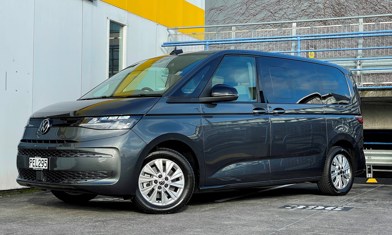Volkswagen’s baby light commercial, the Caddy, has always been a brilliantly practical little van. But it hasn’t always been right up to date in terms of technology – at least compared with passenger models like Golf.
The latest Caddy looks really sharp and it’s based on VW’s new-generation MQB platform, just like the Golf. It also picks up a lot of the flash stuff inside, like the availability of a fully digital dashboard, toggle-type gear selector and of course all the driver-assists that MQB entails. Every model has adaptive cruise, Lane Assist and autonomous braking, for example.
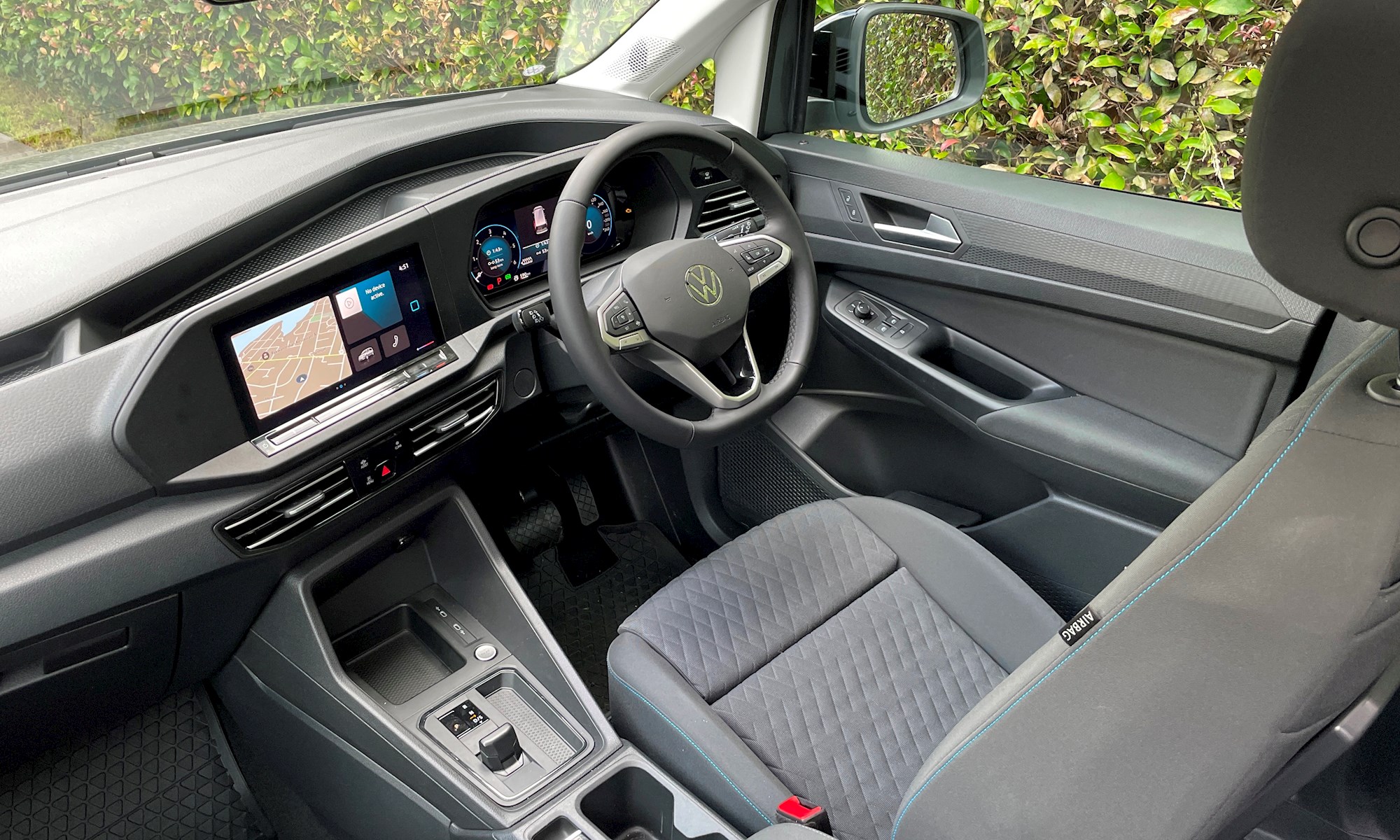
The range is split in two: there are commercial variants including the Cargo and a long-wheelbase Cargo Maxi, then passenger models: Life and the limited-edition Move seven-seaters, plus the very cool California, which has just five seats but adds the folding bed, shades and camping chairs/table in back.
We’ve had a taste of both kinds: the $42,500 Caddy Cargo DSG and the $54,000 Caddy Move. Both get the same 90kW/320Nm turbo-diesel, although a lower-powered 75kW/280Nm version is fitted to the manual Cargo.
The D-word and VW might still be an awkward combination, but this is a very clean engine: EU6 emissions and AdBlue for the exhaust. It’s torquey, which you expect; but also incredibly quiet for a diesel, which you don’t. Especially in a van.
To view all Volkswagen vans currently listed on DRIVEN, click here
We’re a bit more focused on the passenger side of things at DRIVEN, so let’s start with the Move. It’s essentially a special-edition version of the Life, costing an extra $4k. You’re not getting a whole lot for that, but it’s nice detail stuff all the same: a special design of 17-inch alloy shared with California, power latching for the sliding doors, panoramic glass roof, LED lights… and “Move” decals.
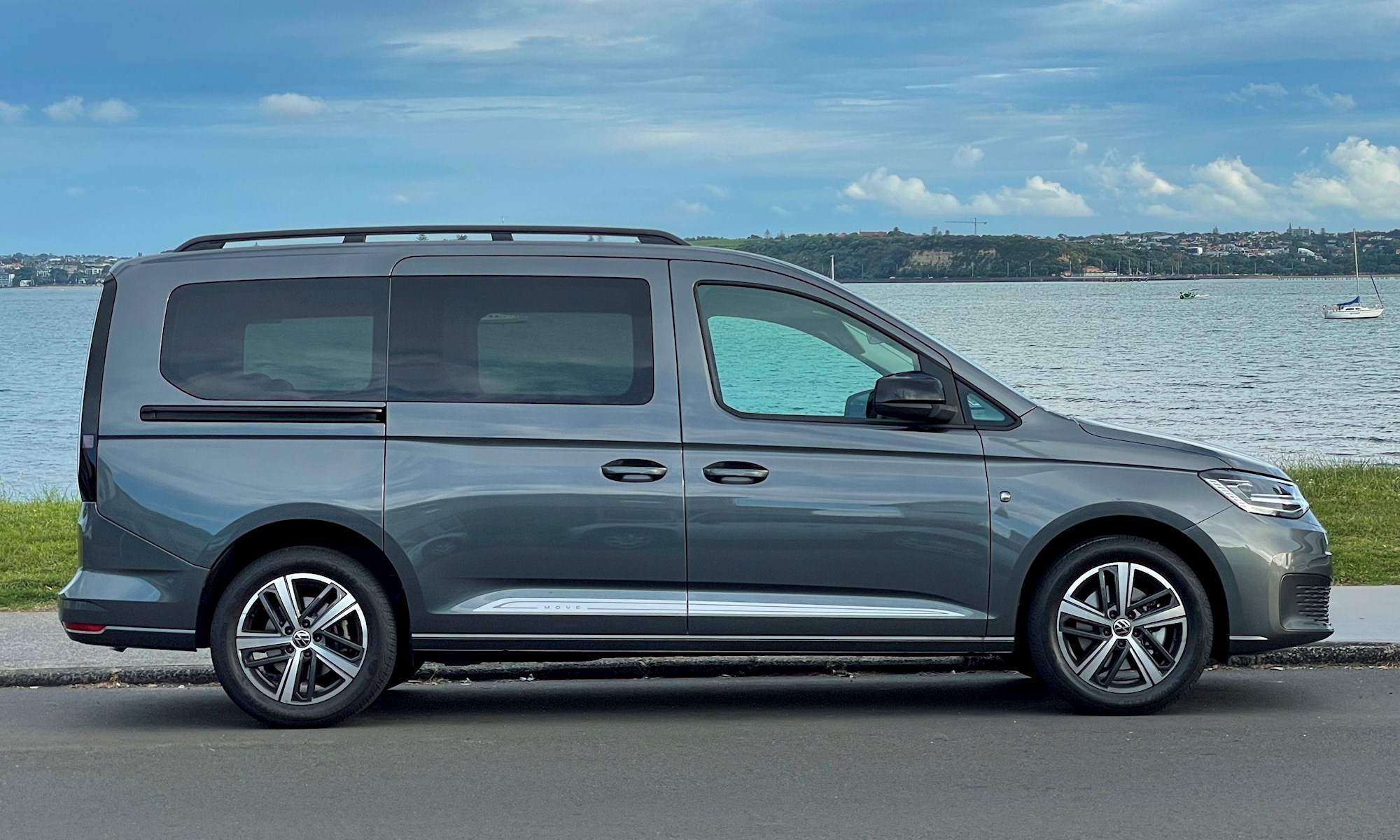
Being a limited edition means that’s all you can have; no ticking the option boxes to add anything more to the Move. You can however put all of the above onto the Life, it’ll just cost you more like $5k. Well, all of the above except the stickers.
As a seven-seater, the Move is a work of packaging genius. The floor is completely flat and the roof is very tall, meaning it’s a great way to travel for all concerned. The second row is split 60/40, the rear 50/50. Each of those sections can be folded, tipped forward or removed completely to mix and match occupant and cargo space whichever way you want. Ultimately, you can just turn it back into a van again (a van with nice carpet).
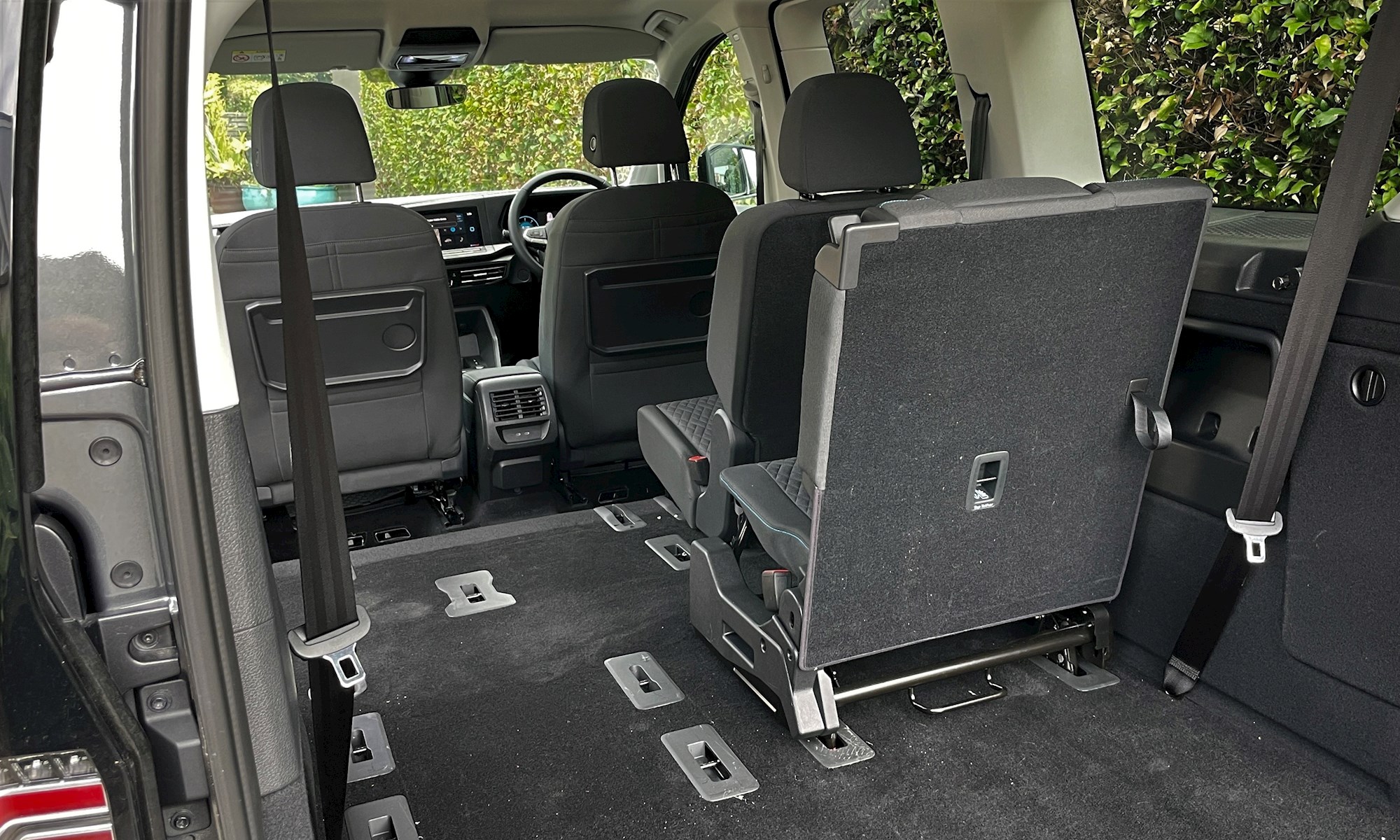
In some respects the Move is the modern equivalent of the old Skoda Roomster, except without the weird looks. Speaking as an old Roomster hand, the latching mechanisms are very similar and very easy to use, except that the 60 per cent part of the second row is extremely heavy; it’s almost a two-person job to get it safely removed and then remounted. A 40/20/40 arrangement would be easier on the back (your back, I mean).
The Caddy can also be just a van, of course. After the Move we spent a few days in the standard Cargo, which is based on a 353mm-shorter wheelbase (although the Cargo Maxi steps back up to full size).
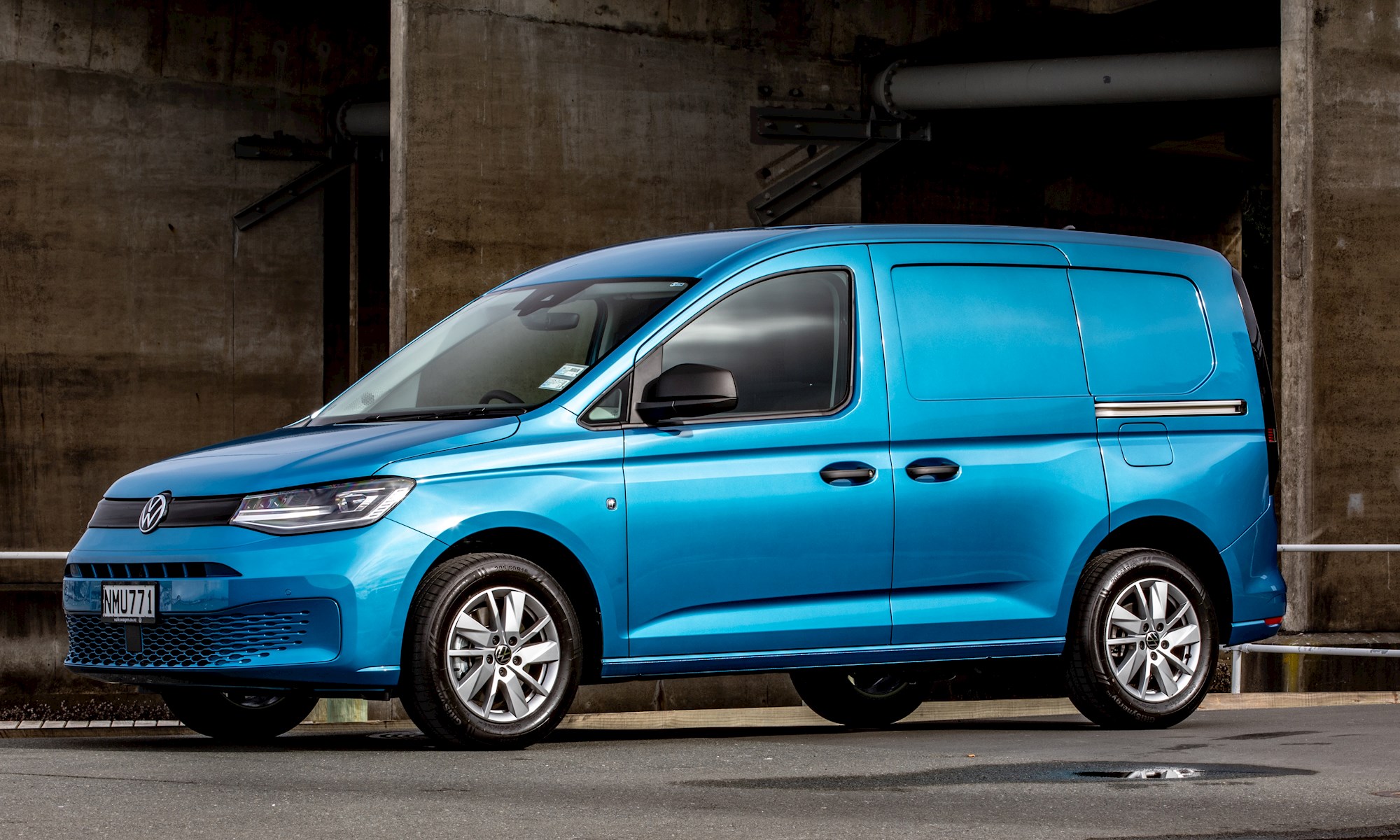
Not as swish in the cabin of course, with analogue instruments and a smaller infotainment screen with phone projection you need to plug in, but in a van context it still feels modern, well-sorted and it’s fun to drive – which may seem trite when we’re talking about a work vehicle, but aren’t they the ones you spend most time behind the wheel of?
Speaking of well sorted, our test car came fully kitted up with racks and shelving from specialist company Sortimo. This kind of stuff is customised for the end user of course (as is the price), but this “what we can do” demonstration setup is deeply impressive for the volume of equipment and quality of organisation. Take a look at the pictures here and in the gallery below and you’ll see what I mean. It allows a small Caddy to do big things.
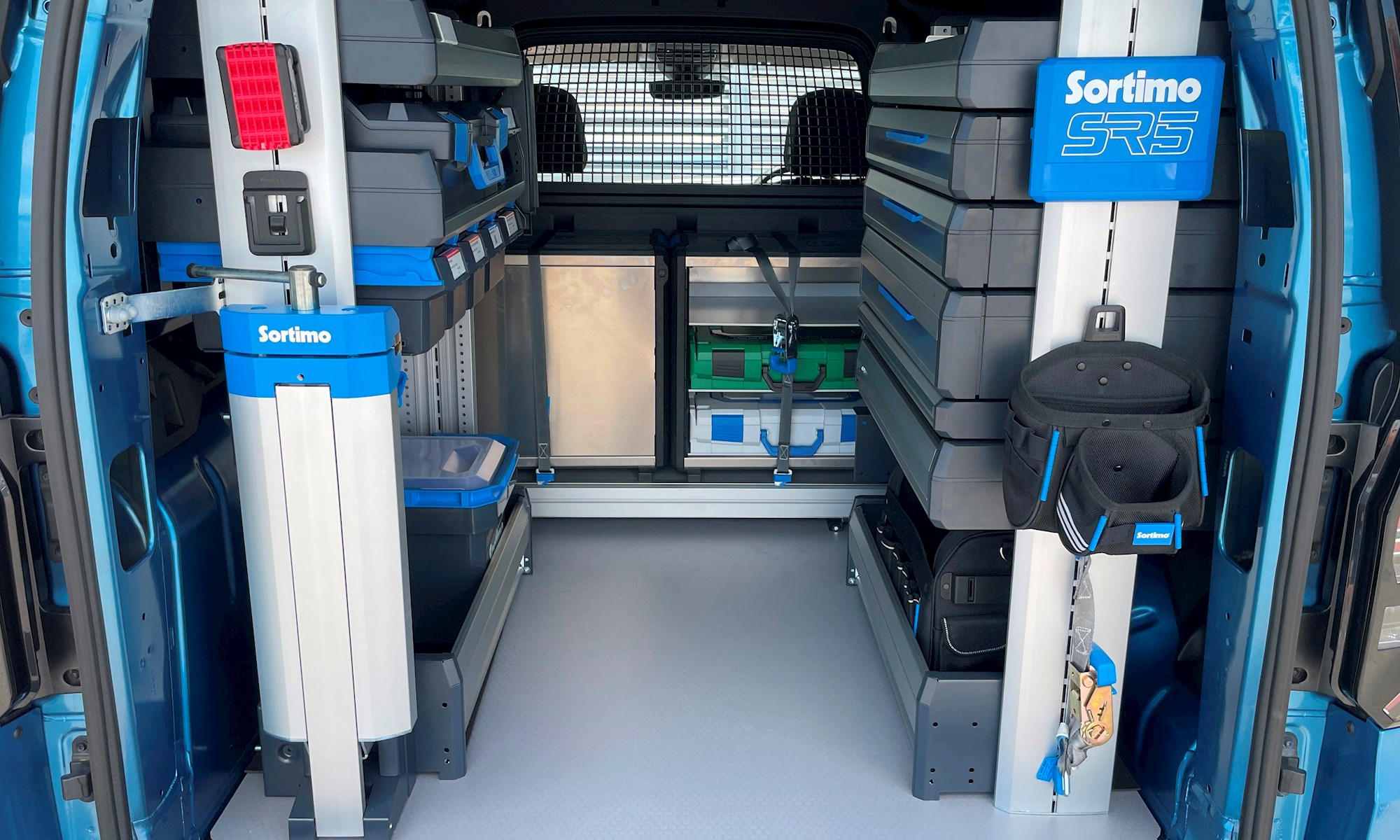
To answer the obvious question, VW does not plan to launch a plug-in version of the Caddy. With the imminent arrival of the ID.Buzz BEV van (which will be about the same size as the Caddy Cargo Maxi), it reckons a zero-emissions version of the latter would be redundant.
Given Caddy is an MQB-based vehicle, at best it would have been a Plug-in Hybrid Electric Vehicle (PHEV). VW’s new BEVs all use the MEB platform, including the ID.3 hatch, ID.4 SUV and of course that ID.Buzz. So the Caddy will simply stick with diesel.
VOLKSWAGEN CADDY
ENGINE: 2.0-litre turbo diesel four
POWER: 75kW/280Nm (entry cargo only), 90kW/320Nm
GEARBOX: 6-speed manual (Cargo only) or 7-speed automated dual clutch (DSG), FWD
ECONOMY: 5.6-5.8l/100km (WLTP)
PRICE RANGE: $39,500 (Cargo manual) to $65,500 (California)
















